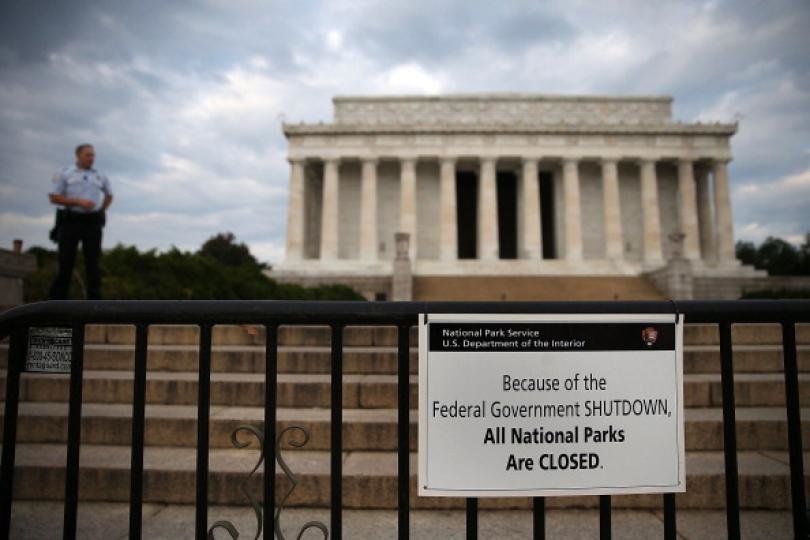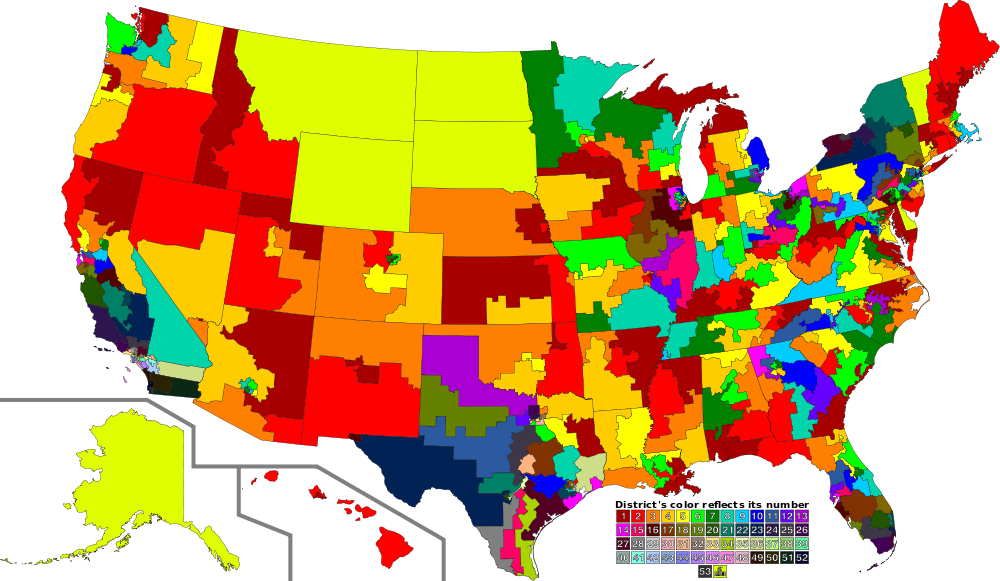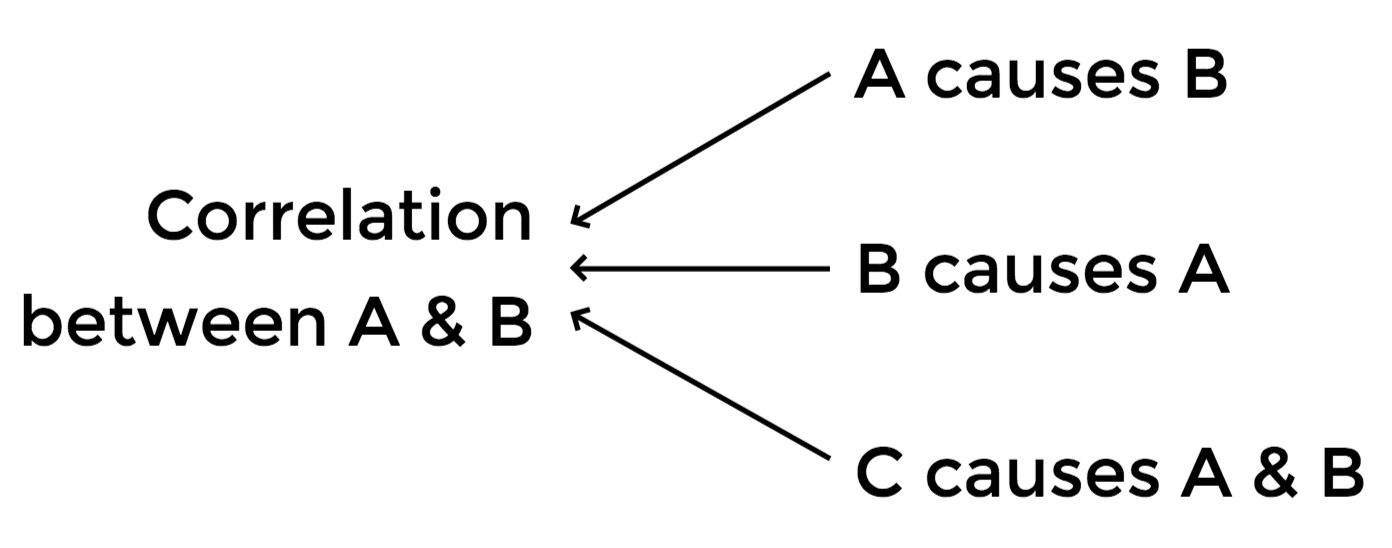Politics through the Lens of Economics
Lecture 8: Legislative Bargaining
Masayuki Kudamatsu
22 November, 2017
Discussion time
Can the Probabilistic Voting Model explain
why lobbying activities are not banned in the United States?

Liborio Prosperi. The Lobby of the House of Commons. 1886. National Portrait Gallery, London. en.wikipedia.org/wiki/Liborio_Prosperi
NRA (National Rifle Association) in U.S.

Background information for discussion
Perhaps the most famous example of a lobbying group
Money involved
in U.S. in 2012
Campaign contributions
Interest
Groups
Politicians
Lobbyists
Hire
Persuade
$750,000,000
$3,500,000,000
Source: de Figueiredo and Richter (2014), p. 165
Background information for discussion (cont.)
Discussion time
Can the Probabilistic Voting Model (assumptions / predictions) explain why lobbying activities are not banned in the United States?
Aim to come up with a wrong answer

Motivation #1: Legislative policy-making
The models we've seen so far
The elected politician
chooses policies
single-handedly
Elected legislators
pass the bill
by majority voting
Reality
Motivation #2: "Agenda setter"
Legislature, however, doesn't just vote on a bill
Somebody has to propose a bill
Only a subset of legislators propose a bill in reality
Cabinet ministers in parliamentary systems (UK, etc.)
Legislative committees in presidential systems (US etc.)
Agriculture Appropriations Armed Services Budget
Education and the Workforce Energy and Commerce Ethics
Financial Services Foreign Affairs Homeland Security
House Administration Judiciary Natural Resources
Oversight and Government Reform Rules
Science, Space, and Technology Small Business
Transportation and Infrastructure Veterans' Affairs Ways and Means
Source: www.congress.gov/committees
Committees in U.S. Lower House
We will see this committee in action later
Today we will see...
Then why do other legislators delegate the proposal power?
How powerful the agenda setter is
Answer: Otherwise the majority voting rarely reaches an agreement
Today's Road Map

Bargaining over one-dimensional policy
Evidence for agenda-setter's power
Bargaining over multi-dimensional policy
Legislative Bargaining Model
Today's Road Map

Bargaining over one-dimensional policy
Evidence for agenda-setter's power
Bargaining over multi-dimensional policy
Legislative Bargaining Model
Players
Agenda setter
Consider 3-member legislature
Basic insight is the same for many-member legislature
Legislator 2
Legislator 3
Timing of Events
Agenda setter proposes a policy
Otherwise, the default policy is implemented
Other legislators decide whether to vote in favour or against
If the majority is in favour, the proposed policy is implemented
1
2
3
Default policy
e.g. Policy in the previous period, Government shutdown
Implemented if the proposed policy is rejected by majority voting
Government shutdown in U.S.
October 1st-16th, 2013

Timing of Events
Agenda setter proposes a policy
Otherwise, the default policy is implemented
Other legislators decide whether to vote in favour or against
If the majority is in favour, the proposed policy is implemented
1
2
3
Now we apply this model to one dimensional policy
Today's Road Map

Bargaining over one-dimensional policy
Evidence for agenda-setter's power
Bargaining over multi-dimensional policy
Legislative Bargaining Model
One-dimensional policy
Median
Leftist
Rightist
The three legislators' ideal policies
One-dimensional policy
Ideal point
Desirability decreases with distance to the ideal point
These two policies are equally desirable
Distance from the ideal point is the same
Default policy
Median
Leftist
Rightist
Default policy can be anywhere
Default policy
Median
Leftist
Rightist
Default policy can be anywhere
Default policy
Median
Leftist
Rightist
Default policy can be anywhere
Default policy
Median
Leftist
Rightist
Default policy can be anywhere
Case 1: Agenda setter is the median legislator
Agendasetter
Leftist
Rightist
Case 1: Agenda setter is the median legislator
Agendasetter
Leftist
Rightist
Suppose the default policy is to the left of the median
Case 1: Agenda setter is the median legislator
Leftist
Rightist
Leftist votes in favour of any proposal to the left of default
Case 1: Agenda setter is the median legislator
Leftist
Rightist
Rightist votes in favour of proposals to the right of default
Case 1: Agenda setter is the median legislator
Agendasetter
Leftist
Rightist
Agenda setter's ideal is to the right of default
Case 1: Agenda setter is the median legislator
Agendasetter
Leftist
Rightist
Agenda setter proposes his own ideal
Proposal
Against
In favour
Agenda setter's ideal policy is chosen by majority voting
Case 1: Agenda setter is the median legislator
Agendasetter
Leftist
Rightist
Proposal
Against
In favour
In this case, the rightist prefers the default the least
Agenda setter chooses the rightist as a coalition partner
Coalition
Case 1: Agenda setter is the median legislator
Agendasetter
Leftist
Rightist
If the default policy is to the right of the median
By a symmetric argument, the same result holds. Namely...
Case 1: Agenda setter is the median legislator
Agendasetter
Leftist
Rightist
If the default policy is to the right of the median
Proposal
In favour
Against
Agenda setter's ideal policy is chosen by majority voting
Case 1: Agenda setter is the median legislator
Agendasetter
Leftist
Rightist
If the default policy is to the right of the median
Proposal
In favour
Against
Leftist, preferring the default the least, is chosen
as a coalition partner
Coalition
Case 1: Agenda setter is the median legislator
So far, it's the same prediction
as in the median voter theorem
Case 2: Agenda setter is the rightist legislator
Agendasetter
Leftist
Median
Case 2: Agenda setter is the rightist legislator
Agendasetter
Leftist
Median
Suppose the default policy is
to the right of the agenda setter's ideal
Case 2: Agenda setter is the rightist legislator
Agendasetter
Leftist
Leftist prefers policies to the left of default
Case 2: Agenda setter is the rightist legislator
Agendasetter
Median
Median prefers policies to the left of default
(up to the point symmetric around the median)
Case 2: Agenda setter is the rightist legislator
Agendasetter
Leftist
Median
Both prefers the agenda setter's ideal to default
Case 2: Agenda setter is the rightist legislator
Agendasetter
Leftist
Median
Agenda setter proposes his own ideal
The proposal passes with unanimity
In favour
In favour
Proposal
Case 2: Agenda setter is the rightist legislator
Agendasetter
Leftist
Median
Suppose the default policy is to the right of the median
Case 2: Agenda setter is the rightist legislator
Agendasetter
Leftist
Leftist votes in favour of any proposal to the left of default
Case 2: Agenda setter is the rightist legislator
Agendasetter
Median
Median votes in favour of proposals
between default and the one symmetric to median
Case 2: Agenda setter is the rightist legislator
Agendasetter
Leftist
Median
For agenda setter, the rightmost policy that the median legislator approves is the best feasible policy
Case 2: Agenda setter is the rightist legislator
Agendasetter
Leftist
Median
Agenda setter proposes the default policy
Case 2: Agenda setter is the rightist legislator
Agendasetter
Leftist
Median
Agenda setter proposes the default policy
The proposal passes with unanimity
In favour
In favour
Case 2: Agenda setter is the rightist legislator
Agendasetter
Leftist
Median
Suppose the default policy is to the left of the median
Case 2: Agenda setter is the rightist legislator
Agendasetter
Leftist
Leftist votes in favour of any proposal to the left of default
Case 2: Agenda setter is the rightist legislator
Agendasetter
Median
Median votes in favour of proposals
between default and the one symmetric to median
Case 2: Agenda setter is the rightist legislator
Agendasetter
Leftist
Median
For agenda setter, the rightmost policy that the median legislator approves is the best feasible policy
Case 2: Agenda setter is the rightist legislator
Agendasetter
Leftist
Median
Proposal
Median legislator votes in favour to pass the proposal
For agenda setter, the rightmost policy that the median legislator approves is the best feasible policy
Case 2: Agenda setter is the rightist legislator
Agendasetter
Leftist
Median
Proposal
Median legislator is chosen as a coalition partner
because it is cheaper for the agenda setter
to provide the same benefit as the default policy
Coalition
Case 2: Agenda setter is the rightist legislator
Agendasetter
Leftist
Median
Suppose the default policy is to the left of the leftist's ideal
Case 2: Agenda setter is the rightist legislator
Agendasetter
Leftist
Median
Now the median's preferable policies include
Agenda setter's ideal to default
Case 2: Agenda setter is the rightist legislator
Agendasetter
Leftist
Median
Agenda setter proposes his own ideal
Proposal
Case 2: Agenda setter is the rightist legislator
Agendasetter
Leftist
Median
Proposal is approved by Median
Proposal
In favour
Against
Case 2: Agenda setter is the rightist legislator
Agendasetter
Leftist
Median
Proposal
In favour
Against
Coalition
Case 2: Agenda setter is the rightist legislator
Agendasetter
Leftist
Median
Agenda setter can pass the proposal between his own ideal and median's ideal
This is the agenda setting power
Case 3: Agenda setter is the leftist legislator
Rightist
Agenda setter
Median
What's the range of policies to be implemented in this case?
Case 3: Agenda setter is the leftist legislator
Rightist
Agenda setter
Median
By the symmetric argument to Case 2,
Agenda setter can pass the proposal
between her ideal and median's
This is the agenda setting power
Why giving up the agenda-setting power, then?
Its value is clear if the policy is multidimensional
Today's Road Map

Bargaining over one-dimensional policy
Evidence for agenda-setter's power
Bargaining over multi-dimensional policy
Legislative Bargaining Model
Voting Cycles
If policy is multi-dimensional...
For every proposal, there is another preferred by the majority
We've seen an example in Lecture 6
No policy will be approved by majority voting
Division-of-a-pie problem
0
100
100
Legislator 2's
share
Legislator 1's
share
Division-of-a-pie problem
0
100
100
Legislator 2's
share
Legislator 1's
share
Suppose the default policy is (50,30,20)
Division-of-a-pie problem
0
100
100
Legislator 2's
share
Legislator 1's
share
Policies that Legislator 1 prefers to default
Division-of-a-pie problem
0
100
100
Legislator 2's
share
Legislator 1's
share
Policies that Legislator 2 prefers to default
Division-of-a-pie problem
0
100
100
Legislator 2's
share
Legislator 1's
share
Policies that
Legislator 3
prefers to default
80
80
When Legislator 1 is the agenda-setter
0
100
100
Legislator 2's
share
Legislator 1's
share
Legislator 1 will pick the rightmost policy in this region that is approved by at least one legislator
0
100
100
Legislator 2's
share
Legislator 1's
share
Best for legislator 1 among those that 2 will agree
When Legislator 1 is the agenda-setter
70
30
0
100
100
Legislator 2's
share
Legislator 1's
share
80
80
Best for legislator 1 among those that 3 will agree
When Legislator 1 is the agenda-setter
0
100
100
Legislator 2's
share
Legislator 1's
share
Which will legislator 1 propose?
When Legislator 1 is the agenda-setter
0
100
100
Legislator 2's
share
Legislator 1's
share
Legislator 1 proposes (80, 0, 20)
Legislator 3 agrees
When Legislator 1 is the agenda-setter
0
100
100
Legislator 2's
share
Legislator 1's
share
When Legislator 2 is the agenda-setter
Legislator 2 will pick the highest policy in this region that is approved by at least one legislator
When Legislator 2 is the agenda-setter
0
100
100
Legislator 2's
share
Legislator 1's
share
Best for legislator 2 among those that 1 will agree
50
0
100
100
Legislator 2's
share
Legislator 1's
share
80
80
Best for legislator 2 among those that 3 will agree
When Legislator 2 is the agenda-setter
0
100
100
Legislator 2's
share
Legislator 1's
share
80
Which will legislator 2 propose?
When Legislator 2 is the agenda-setter
0
100
100
Legislator 2's
share
Legislator 1's
share
80
When Legislator 2 is the agenda-setter
Legislator 2 proposes (0, 80, 20)
Legislator 3 agrees
0
100
100
Legislator 2's
share
Legislator 1's
share
80
80
When Legislator 3 is the agenda-setter
Legislator 3 will pick the most bottom-left policy in this region that is approved by at least one legislator
When Legislator 3 is the agenda-setter
0
100
100
Legislator 2's
share
Legislator 1's
share
Best for legislator 3
among those that
1 will agree
0
100
100
Legislator 2's
share
Legislator 1's
share
When Legislator 3 is the agenda-setter
Best for legislator 3
among those that
2 will agree
0
100
100
Legislator 2's
share
Legislator 1's
share
When Legislator 3 is the agenda-setter
Which will legislator 3 propose?
0
100
100
Legislator 2's
share
Legislator 1's
share
When Legislator 3 is the agenda-setter
Legislator 3 proposes (0, 30, 70)
Legislator 2 agrees
Summary
| Agenda-setter | 1 | 2 | 3 |
| 1 | |||
| 2 | |||
| 3 | |||
| Default | 50 | 30 | 20 |
Summary
| Agenda-setter | 1 | 2 | 3 |
| 1 | 80 | 0 | 20 |
| 2 | |||
| 3 | |||
| Default | 50 | 30 | 20 |
Summary
| Agenda-setter | 1 | 2 | 3 |
| 1 | |||
| 2 | 0 | 80 | 20 |
| 3 | |||
| Default | 50 | 30 | 20 |
Summary
| Agenda-setter | 1 | 2 | 3 |
| 1 | |||
| 2 | |||
| 3 | 0 | 30 | 70 |
| Default | 50 | 30 | 20 |
Summary
| Agenda-setter | 1 | 2 | 3 |
| 1 | 80 | 0 | 20 |
| 2 | 0 | 80 | 20 |
| 3 | 0 | 30 | 70 |
| Default | 50 | 30 | 20 |
Agenda-setter gets a lot
Summary
| Agenda-setter | 1 | 2 | 3 |
| 1 | 80 | 0 | 20 |
| 2 | 0 | 80 | 20 |
| 3 | 0 | 30 | 70 |
| Default | 50 | 30 | 20 |
Worst default outcome
Be part of coalition
Why delegating the agenda-setting power?
| Agenda-setter | 1 | 2 | 3 |
| 1 | 80 | 0 | 20 |
| 2 | 0 | 80 | 20 |
| 3 | 0 | 30 | 70 |
| Default | 50 | 30 | 20 |
To reach an agreement to implement some policy
For a majority, it's better than being stuck to the default policy
Today's Road Map

Bargaining over one-dimensional policy
Evidence for agenda-setter's power
Bargaining over multi-dimensional policy
Legislative Bargaining Model
Highway Trust Fund in U.S.
Drivers
Federal govt
Gasoline tax
State govts
Fiscal transfer
Highways
Construct & Maintain
Congress chooses
which highways to be financed
($5b in 1991, $8b in 1998)
Testing ground:
Legislative process for Highway Trust Fund
House of Representatives (435 members)
House Committee on
Transportation and Infrastructure
(55 or 72 members)
Fund allocation bill
Propose
Vote
Measurement of fund allocation
Match project locations with representatives' electoral districts

Theoretical prediction #1
Majority voting
Some non-committee members receive zero
Share of congressional districts receiving zero
| Committee members | The others | |
|---|---|---|
| 1991 | 0% | 72% |
| 1998 | 0% | 21% |
Source: Table 1 of Knight (2005)
Committee members set the agenda
Theoretical prediction #2
Their district receives more funds
Average Allocated Spendings
| Committee members | The others | |
|---|---|---|
| 1991 | $54.8m | $6.1m |
| 1998 | $38.5m | $13.8m |
Source: Table 1 of Knight (2005)
Caveat: is it really agenda-setting power?

Committee members may be from districts in need of infrastructure
Summary
Legislative bargaining outcomes favour the agenda setter
One justification for delegating agenda setting power
= Reach an agreement on multi-dimensional policy issues
Next lecture
Presidential vs. Parliamentary Systems

Image source: slideplayer.com/slide/6430766/
This lecture is based on the following academic articles and books.
Knight, Brian. 2005. “Estimating the Value of Proposal Power.” American Economic Review, 95(5): 1639–52.
Persson, Torsten, and Guido Tabellini. 2000. Political Economics. MIT Press. pp. 105-106.
The legislative bargaining model was originally proposed by:
Baron, David P., and John Ferejohn. 1989. “Bargaining in Legislatures.” American Political Science Review, 83(4): 1181–1206.
Gehlbach, Scott. 2013. Formal Models of Domestic Politics. Cambridge University Press. pp. 123-124.
Politics through the Lens of Economics (2017): Lecture 8 Legislative Bargaining
By Masayuki Kudamatsu
Politics through the Lens of Economics (2017): Lecture 8 Legislative Bargaining
- 1,630



